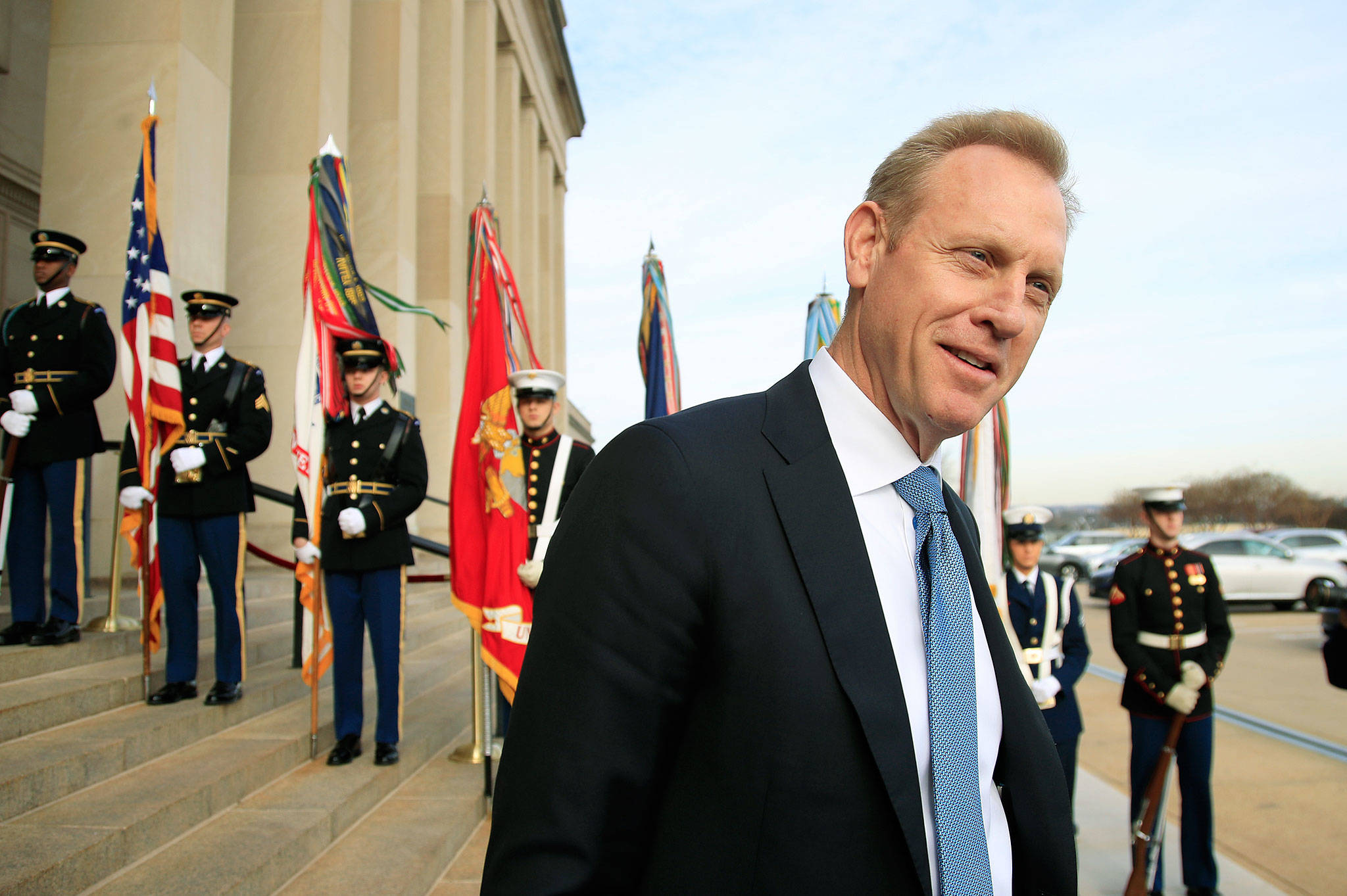By Dan Lamothe / The Washington Post
When Deputy Defense Secretary Patrick Shanahan faced the Senate Armed Services Committee 17 months ago during his confirmation hearing, Sen. John McCain quickly turned up the heat.
The late Arizona Republican, then the committee chairman, questioned how Shanahan would run day-to-day operations at the Pentagon despite his deep ties to the defense contractor Boeing, and then lit into him for something specific. In prepared answers to questions, Shanahan had said he would review whether the United States should send Ukraine weapons to defend itself against Russian-backed separatists. Shanahan amended his response to say that he would support the idea, but McCain still threatened to stop a vote on his confirmation.
“That’s not good enough, Mr. Shanahan,” McCain said. “I’m glad to hear you changed your opinion from what was submitted, but it’s still disturbing to me. It’s still disturbing to me after all these years that you would say that you would have to look at the issue. Have you not been aware of the issue? Have you not been aware of the actions of the Senate Armed Services Committee? Have you not been aware of the thousands of people that have been killed by (Russian President) Vladimir Putin?”
The exchange highlights the difficulties that Shanahan faces now that President Donald Trump abruptly named him Sunday as acting defense secretary, beginning Jan. 1.
The president’s decision, after days of negative news coverage about Defense Secretary Jim Mattis’ resignation over disagreements with Trump, puts a new senior official in charge of the Pentagon two months earlier than expected. It also thrusts Shanahan into the spotlight amid the president’s plans to withdraw thousands of troops from Syria and Afghanistan, and as the Pentagon is preparing to defend a $750 billion budget request to Congress.
Shanahan, 56, will take the helm after a 30-year career at the Boeing Co., where he became a senior vice president. Like Mattis, he is a Washington state native who has touted the national defense strategy the Pentagon adopted last year, which focuses heavily on preparing the military for a fight against a “near-peer competitor” like China or Russia. Unlike Mattis, he has no military experience, no previous government experience and little experience with foreign policy.
Shanahan has embraced government service since joining the administration, characterizing it as his opportunity to serve fellow Americans. At the Pentagon, he sometimes has “out-of-body” experiences, he said in September.
“I’m often asked about the transition to the department with an undertone, ‘Is it what you expected?’” Shanahan said in September at an Air Force Association conference. “I tell people, “It’s like breaking up with your longtime girlfriend and finding the love of your life.”
At the Pentagon, Shanahan’s primary role as deputy defense secretary has focused on running day-to-day operations inside the building while Mattis took a more public role and focused on operations and geopolitics. That’s a common arrangement between a defense secretary and his deputy.
However, Shanahan, the son of a Vietnam veteran, also has taken a leading role in forming a policy to match Trump’s desire for a Space Force, and he’s been involved in tense internal deliberations about how the Pentagon spends its money.
Shanahan predicted last year that there would be “screaming and yelling” over internal restructuring. Others in the Pentagon have worried that Shanahan doesn’t understand the “culture of the building” and has struggled with high turnover on his immediate staff and tensions with the military services.
Shanahan could not be reached for comment Sunday. His spokesman, Army Lt. Col. Joseph Buccino, said he will continue to serve at the pleasure of the president.
When he joined the Pentagon in 2017, Shanahan had been a vice president at Boeing, the second-largest defense contractor in the country, where he oversaw manufacturing and supplier management. He joined Boeing in 1986 and later was credited with getting the 787 back on track after years of production problems. During his career, he managed the 737, 747, 767, 777 and 787 programs and was responsible for operations at Boeing’s main manufacturing sites in Everett, Renton and North Charleston, South Carolina.
He also worked on the company’s defense side, where he oversaw U.S. Army aviation, including helicopter programs such as the CH-47 Chinook, the Bell-Boeing V-22 Osprey tiltrotor and the AH-64D Apache attack helicopter.
A Seattle native, Shanahan studied mechanical engineering at the University of Washington, where he served as a regent until 2017.
In public appearances on behalf of the Pentagon, Shanahan has focused mainly on the subjects in which he has a leading role. Like Mattis, he also has underscored the importance of maintaining and expanding alliances abroad, a key point of disagreement between Mattis and the president.
“Relationships aren’t monolithic. They’re complex,” Shanahan said in September. “We will agree in some places and disagree in others. Secretary Mattis has traveled to nearly 60 countries so far. That’s what I call commitment.”
Shanahan complimented Mattis during the same appearance for maintaining stability at the Pentagon and said working for him was like getting a PhD in world affairs.
“Most people kind of think of him in the context of being a … military leader and, you know, motivator,” Shanahan said. “I’ve appreciated his real strength: He understands how to govern. He understands how government should work. He understands policy. He understands the law. He understands the value of relationships.”
The McClatchy news service and the Herald staff contributed.
Talk to us
> Give us your news tips.
> Send us a letter to the editor.
> More Herald contact information.

























